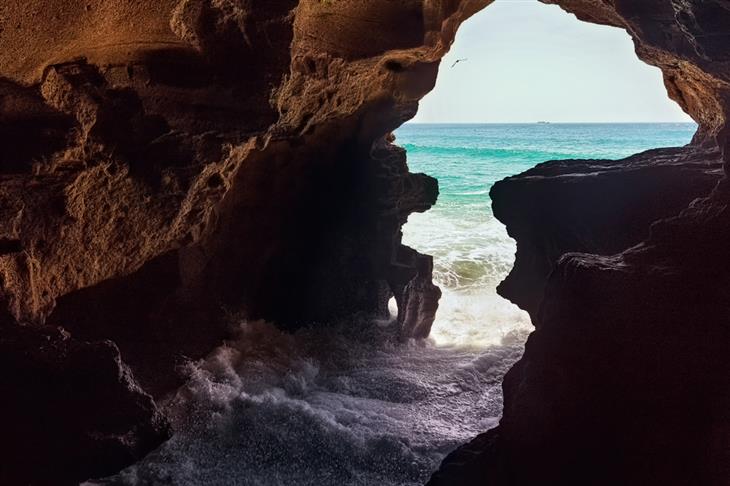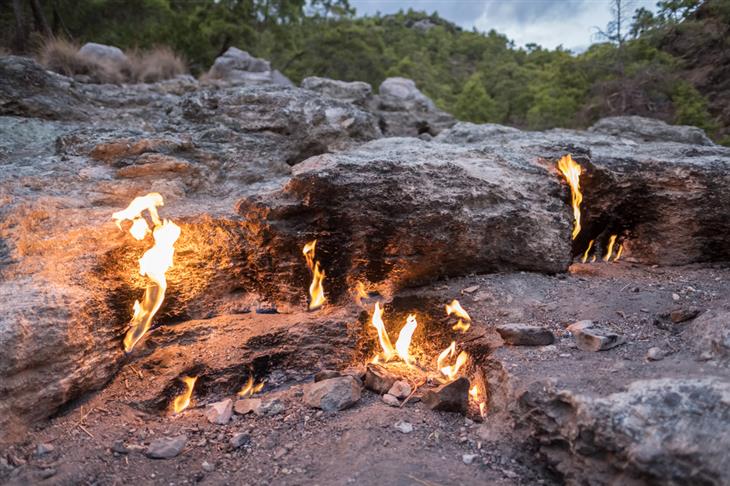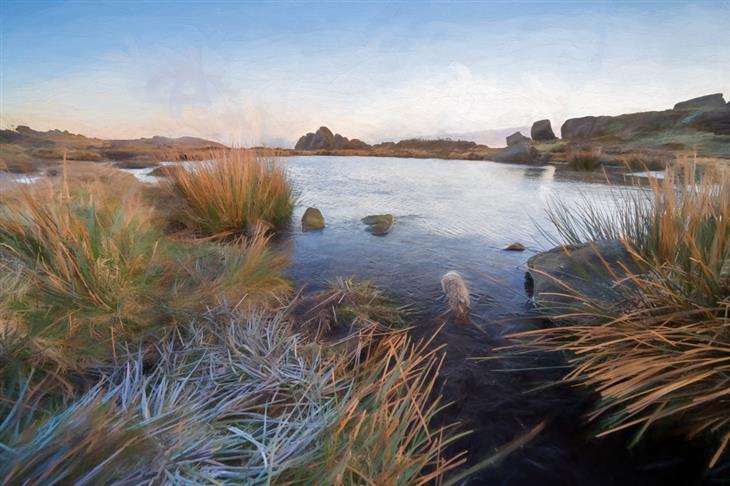Nestled in the Northwestern Extremity of the African continent is a fascinating cave complex steeped in myths and legends. According to a popular legend, this cave complex hosted a visit from one of Roman mythology's most renowned heroes, Hercules. The myth suggests that Hercules rested here during his quest to pilfer three golden apples from the Garden of the Hesperides—a feat considered the 11th of his famous "12 Labors." Ancient texts place the garden in the proximity of Lixus, present-day Larache, on the Atlantic coast.
There is also the story that the cave is the end of a tunnel between Spain and Morocco that extends for 15 miles (24 kilometers). As per a widespread folktale, the famous macaque monkeys found at Gibraltar's rock made their way from Africa through this passageway.
The caves are near the Cap Spartel lighthouse, which was built between 1861 and 1864 by an international coalition (including the US, France, Spain, and Morocco) and marks the entrance to the Strait of Gibraltar.
2. Yanartaş, Turkey
Yanartaş, also known as the "Chimaera," is a natural phenomenon located in Olympos, Turkey, that features eternal flames emerging spontaneously from rocky slopes. This breathtaking and unique site has historical significance, with ancient sailors reportedly using the Chimaera's flames as a navigational aid.
The flames at Yanartaş are caused by the combustion of methane gas escaping from the Earth's crust, giving the appearance of an ever-burning fire. The area holds cultural and mythical significance, associated with the Chimera, a mythical creature from Greek mythology.
That said, Yanartaş is not just a historical and mythical site; it is also a popular destination for hikers and travelers seeking to soak in the rich ambiance of this unique Turkish landmark. This enchanting site is sure to leave you in awe with its stunning flames and natural beauty.
3. Doxey Pool, England
The mysterious Doxey Pool is a gritstone escarpment on the Staffordshire/Derbyshire boundary, situated along the way atop the Roaches. A number of accounts claim that the strange body of water has no bottom; others maintain that there is a deep subterranean passage that connects Blake Mere with Blake Mere, another nearby tarn. Both are claimed to be the home of Jenny Greenteeth, a wicked mermaid who is commonly represented as a blue nymph. Miss Florence Pettit recounted an unusual encounter in 1949 when a strange creature appeared soon before her morning swim.
The spirit may have been the creation of Miss Pettit's imagination, but there is still a haunting atmosphere surrounding the mere, leading one to imagine that otherworldly creatures exist beneath its surface. It is unknown if this atmosphere is caused by the pool's remote position and bleak waters or by the presence of an otherworldly nymph.
4. Cave of Zeus, Turkey
The Cave of Zeus is located near the seaside town of Güzelçaml in western Turkey, on the outskirts of the Dilek Peninsula-Büyük Menderes Delta National Park. Despite being hidden by olive trees and wildflowers, the cave attracts a steady stream of visitors who descend 15 meters (about 50 feet) down a stone pathway to find a chilly lake fed by both mountain runoff and seawater.
The cave is revered for its unique significance in local mythology as a sanctuary where Zeus sought refuge whenever he was at odds with his brother Poseidon, the lord of the sea and storms. Zeus would seek refuge in this underground hideaway in response to Poseidon's violent tempests.
A different version of the story says Zeus would secretly leave Mount Olympus to engage in an aquatic rendezvous with village maidens, evading the watchful eyes of his wife, Hera. In the Aegean region, a number of locations are referred to as "Caves of Zeus," each woven into the legend surrounding the Olympian ruler.
Visitors visiting these caves often bring a fabric, a representation of their dreams, which they tie to an olive tree at the entrance.
5. Dock of Souls (Muelle de las Almas), Chile
The Dock of Souls, also known as Muelle de las Almas, is a magical and fascinating site on Chiloé Island in Chonchi, Chile. The charming wooden pier extends gently into the calm waters of the Pacific Ocean, emitting an ethereal allure that has captured the imagination of both locals and tourists.
A popular attraction in Chiloé is a contemporary art display that explores the island's indigenous mythology. This magnificent sculpture, built by Marcelo Orellana Rivera, a Chilean wood sculptor and art professor from Santiago, not only honors the island's traditional culture but also the island's vast natural forests—the very source of the wood that brought fame to Chiloé's boats and churches.
The legend of the Dock of Souls is based on a modified version of a popular Mapuche story. This larger story follows the transformation of four old women into fantastical sea beings known as trempulcahue, who are tasked with the somber responsibility of transporting departed souls across the sea to the next world. The soul was viewed as a sacred "spark" derived from the universal soul, Pu-Am, in Mapuche pre-Christian cosmology. The individual soul (Am) formed a connection with the material universe at birth, dissolving back into the Pu-Am upon death.
The fascinating legend reflects the Mapuche people's deep spiritual connection to nature while also emphasizing the significance of their cultural beliefs surrounding life and death.




